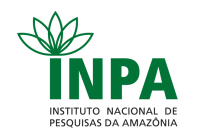Corpo Discente - Egressos
Thiara Luana Mamoré Rodrigues Hirosue
| Título | POTENCIAL DE USO, ETNOCONHECIMENTO E CONSERVAÇÃO DE Eryngium foetidum L. (CHICÓRIA- DO- PARÁ) | ||||||||||||||||||||||||
| Data da Defesa | 16/12/2024 | ||||||||||||||||||||||||
| Download | Visualizar a Tese(3.44MB) | ||||||||||||||||||||||||
Banca
| |||||||||||||||||||||||||
| Palavras-Chaves | Agricultura familiar; Cultivo, Conhecimento Tradicional; Feiras livres. | ||||||||||||||||||||||||
| Resumo | Nativa da Amazônia, chicória-do- Pará (Eryngium foetidum L.) é uma planta condimentar, medicinal, cultivada por agricultores familiares e amplamente apreciada na culinária nortista do Brasil. Esta pesquisa teve por objetivo analisar o potencial de uso, conservação e o manejo tradicional de E. foetidum a fim de contribuir para a formação da cadeia produtiva da espécie, considerando o papel sociocultural e econômico para as comunidades de Curuçambá (Ananindeua) e Campo Limpo (Santo Antônio do Tauá), Pará, bem como para os feirantes e consumidores das feiras livres de Belém do Pará. Os dados foram coletados nas comunidades de Campo Limpo e Curuçamba, foram realizadas entrevistas com agricultores, feirantes, consumidores e chefes de cozinha, por meio de formulário semiestruturado, a abordagem foi qualiquantitativa, com análises de estatística descritiva, frequência de palavras, além das análises de regressão e modelos lineares no software R, versão 4.2.1. Os resultados foram divididos em três temas: a) Eryngium foetidum L. (Apiaceae): usos tradicionais, composição química e atividades farmacológicas – Artigo de revisão; b) Usos e conhecimento tradicional agronômico de Eryngium foetidum L. em comunidades agrícolas (Curuçambá e Campo limpo) no estado do Pará – Amazônia – Brasil e c) Uso tradicional e presença de mercado de Eryngium foetidum L. nas feiras livres de Belém, Pará. O maior potencial de uso relatado para a chicória é como medicinal, principalmente na América Latina, e restritamente citada na literatura como alimentar e condimentar, com alta atividade antioxidante de valor farmacológico. Além disso, os dados mostram que a chicória é usada na culinária por diversos atores em diferentes esferas, expressando seu valor cultural regional. O gênero como fator sociocultural afetou os usos para fins medicinais e alimentícios de E. foetidum, ressaltando o importante papel das mulheres para a conservação da agrobiodiversidade nas comunidades estudadas. Quanto às técnicas agronômicas, o adubo utilizado pelas comunidades possui diferentes fontes e, por isso, não há relação dos fatores socioculturais com a utilização de adubo produzido na comunidade, conforme as análises estatísticas. Por outro lado, o fator idade indicou tendência à adoção de novas práticas de adubação do solo, sugerindo interesse por parte dos agricultores mais jovens em melhorar o cultivo da chicória. Na esfera comercial, os feirantes mais velhos vendiam E. foetidum com base em tradições familiares, e as consumidoras o incorporavam em mais receitas. As folhas da planta eram comumente usadas como tempero alimentar. Assim, este estudo representa um incremento para contribuir com a cadeia produtiva, de uma planta culturalmente relevante para a região Amazônica como a chicória-do-Pará, além de evidenciar diferentes aspectos da importância da sua conservação e uso sustentável frente às ameaças à biodiversidade amazônica. | ||||||||||||||||||||||||
| Abstract | Native to the Amazon, spiny coriander (Eryngium foetidum L.) is a condiment and medicinal plant cultivated by family farmers and widely appreciated in the cuisine of northern Brazil. This research aimed to analyze the potential use, conservation, and traditional management of E. foetidum to contribute to the formation of the species production chain, considering the sociocultural and economic role for the communities of Curuçambá (Ananindeua) and Campo Limpo (Santo Antônio do Tauá), Pará, as well as for the traders and consumers of the street markets of Belém do Pará. Data were collected in the communities of Campo Limpo and Curuçambá through interviews with farmers, traders, consumers, and chefs, using a semistructured questionnaire. The approach was qualitative and quantitative, with descriptive statistics analysis, word frequency, as well as regression and linear models analysis using R software, version 4.2.1. The results were divided into three themes: a) Eryngium foetidum L. (Apiaceae): traditional uses, chemical composition, and pharmacological activities – Review article; b) Uses and traditional agronomic knowledge of Eryngium foetidum L. in agricultural communities (Curuçambá and Campo Limpo) in the state of Pará – Amazon – Brazil; and c) Traditional use and market presence of Eryngium foetidum L. in the street markets of Belém, Pará. The highest reported potential use for spiny coriander is medicinal, mainly in Latin America, and rarely cited in the literature as a food and condiment, with high antioxidant activity of pharmacological value. Additionally, the data show that spiny coriander is used in cuisine by various actors in different spheres, expressing its regional cultural value. Gender as a sociocultural factor affected the medicinal and food uses of E. foetidum, highlighting the important role of women in conserving agrobiodiversity in the studied communities. Regarding agronomic techniques, the fertilizer used by the communities has different sources, and therefore, there is no relationship between sociocultural factors and the use of fertilizer produced in the community, according to the statistical analyses. On the other hand, age indicated a tendency to adopt new soil fertilization practices, suggesting interest from younger farmers in improving spiny coriander cultivation. In the commercial sphere, older traders sold E. foetidum based on family traditions, and female consumers incorporated it into more recipes. The plant leaves were commonly used as a food seasoning. Thus, this study represents an increment to contribute to the production chain of a culturally relevant plant for the Amazon region, such as spiny coriander, in addition to highlighting different aspects of the importance of its conservation and sustainable use in the face of threats to Amazonian biodiversity. | ||||||||||||||||||||||||
Parceiros

























